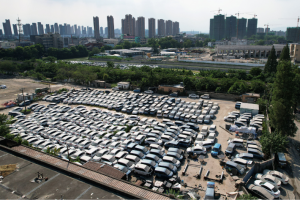Guangdong, China’s most populous province, said on Friday that its two biggest metropolises must allocate at least 10% of their land for rental housing to meet rising demand for homes especially among the young.
Under proposed new rules, rental housing in Guangzhou and Shenzhen will focus on the development of homes no larger than 70 square metres in area for new residents and young people.
Additionally, the rents they pay must be lower than the rents of other properties in their neighbourhood, the Guangdong government said in a document.
Guangdong’s population has soared in the past decade to 126 million as the likes of tech giants such as Huawei and Tencent based in the southern province attract people from other provinces seeking high-paying jobs.
New home prices in Guangdong have soared in line with its growing population and economy, putting pressure on lower-income groups including fresh graduates with entry-level salaries.
In August, Guangdong said it will build 740,500 units of rental housing in 2021-2025, with 222,000 to be completed this year.
Besides Guangzhou and Shenzhen, rental housing projects will also be a focus for major cities in the heavily industrialised Pearl River Delta, north of Hong Kong, which includes cities such as Zhuhai, Foshan, Dongguan and Zhongshan.
New home prices in Shenzhen, China’s Silicon Valley, averaged 55,000 yuan ($8,600) per square metre in October, the costliest of the 100 cities tracked by China Index Academy, one of the country’s largest independent real estate research firms.
President Xi Jinping’s pledge to narrow social disparities to achieve so-called “common prosperity” has put the plight of low-income households and individuals at the forefront of Beijing’s policymaking.
China, in September, said the cost of renting a home in cities should not rise by more than 5% a year.
- Reuters with additional editing by Jim Pollard
ALSO READ:
‘Common Prosperity’ Sees China Stock Investors Going Green






















